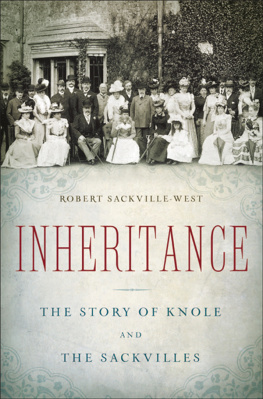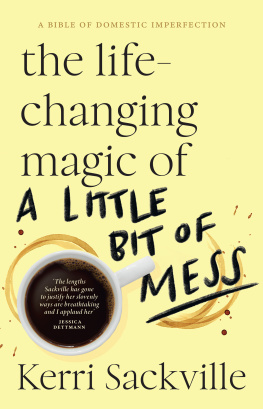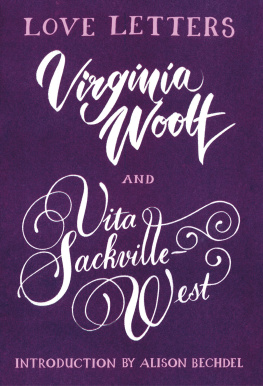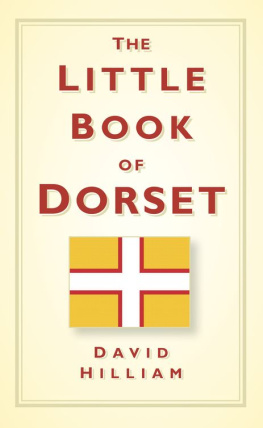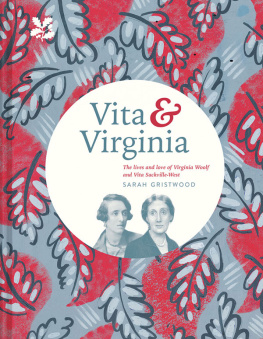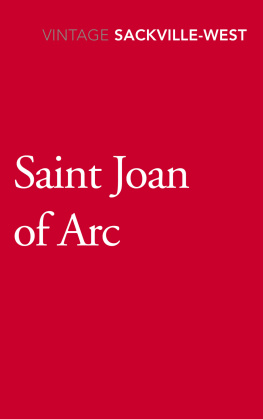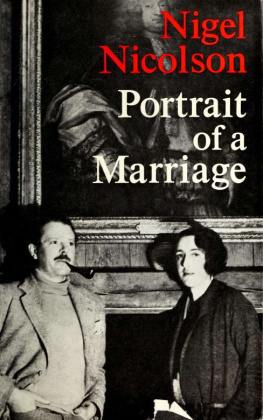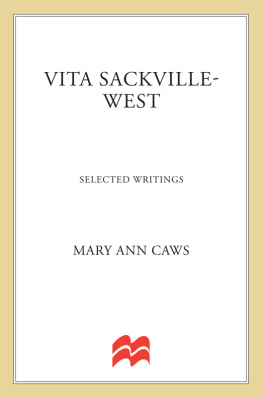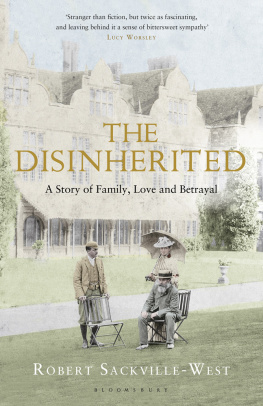Acknowledgements
It would not have been possible to write this book without the historical archives and collections in the United Kingdom and the United States. I am particularly grateful to Michael Carter and his colleagues at the Centre for Kentish Studies in Maidstone, Kent. I would also like to thank Robin Harcourt-Williams at Hatfield House; Christopher Whittick at the East Sussex Record Office in Lewes, Sussex; Brigitte Petit-Archambault in Paris; and the staffs of the London Library and the British Library. Special thanks to the Lilly Library at Indiana University, Bloomington, for awarding me an Everett Helm Visiting Fellowship to study the diaries of Victoria, Lady Sackville, and to the staff at the library for making my week in Bloomington so pleasant and productive.
It will be obvious from the bibliography how indebted I am to the scholarship and publications of others. But there are a number of people who have helped, at first hand, by reading and suggesting amendments to individual chapters. I take full responsibility, however, for any errors. I have enjoyed discussions with Ed Town and Alden Gregory, two research students writing PhDs on Knoles architectural history under the supervision of Maurice Howard. They have shared their findings with me and set me straight on sixteenth- and seventeenth-century Knole. Dr Rivkah Zim, of Kings College, London, the worlds leading authority on Thomas Sackville, 1st Earl of Dorset, kindly read the first chapter; and Dr David Smith of Selwyn College, Cambridge, guided me through the third, on Edward Sackville, 4th Earl of Dorset. Anne, Countess De La Warr and her husband, William, Earl De La Warr, helped me unravel the twin histories of the Sackville inheritances in Kent and Sussex, and took me to the family vault at Withyham, where lie the coffins of more than thirteen generations of Sackvilles. Margaret Simmons has compared my description of life at Knole in the first half of the twentieth century with her memories of it; and Martin Drury, former Director-General of the National Trust, who has always had a particular affection for Knole and has known several generations of the Sackville family, commented on the last two chapters of this book.
I also want to thank friends who have read parts of this book, and in particular, Dr Chris Greenhalgh and Adam Nicolson. Adam, a distant cousin and one of my oldest and dearest friends, has been a generous critic, a supplier of encouragement and support as well as of references to original documents. Above all, he is always happy to explore, in conversation, the further reaches of this slightly barmy, shared family heritage.
I am grateful to Caroline Michel, my literary agent, for believing that this story was worth publishing and then, with her colleague, the writer and editor Tim Binding, for helping me to give it a sharper focus. Michael Fishwick has been a superb and sensitive editor I cant think of a single suggestion he has made with which I have disagreed and his colleagues at Bloomsbury have nurtured the book through all stages of its development with great charm and efficiency.
Special thanks to those who have supported me, at work and at home, in this time-consuming, and occasionally obsessive, task: to Ellen Dupont and my colleagues at Toucan Books for putting up with my absences and distractions; to the trustees, agents and staff of Knole Estates, who make living at Knole such a pleasure; to the staff of the National Trust, who have been unfailingly helpful in many aspects of my life, including providing information for this book; to my mother and next-door neighbour, Bridget Sackville-West, who knows as much as anyone about Knole and its collection; and most of all to my own family, to my children Freya, Arthur and Edie, and to my wife Jane for her love and support.
A Note on the Author
After studying History at Oxford University, Robert Sackville-West worked in publishing, in 1985 founding Toucan Books, which creates illustrated non-fiction books for an international market. He now combines that with chairing Knole Estates, the property and investment company which runs the Sackville familys interests at Knole. In 2008, he and his wife and three children moved into the house, which has been occupied by the Sackville family for four hundred years.
Chapter 1
An Ancient Pile (16041608)
Thomas Sackville , 1st Earl of Dorset
A s you walk out of the woods by Shot Tavern Gate, the turf falls away and there, settling into the gentle slopes of a classic English park below, lies what looks like a small town. A flag flutters from one battlemented tower, and a clock and belfry glitter in the summer haze above another, like the campanile of a Renaissance village. This approach to Knole for the buildings below belong not to a village but to one of the largest privately owned houses in England gives the walker the feeling of having wandered into a lost domain.
The view from here has barely changed in centuries, creating a sense of enchantment not experienced on the three-mile drive from the M25. In and out of the shade of beech trees, the fallow deer step delicately, flicking their tails: descendants of the same flock that has been grazing the park for even longer than the family which owns it. For the past 400 years, Knole has been inhabited by thirteen generations of a single family, the Sackvilles. Here have lived, for more centuries than I can count, the obscure generations of my own obscure family, observes the eponymous hero in Orlando , Virginia Woolfs elegiac novel about Knole.
Orlando , the great country-house novel of the interwar years, is part of a tradition that reaches back to the poems of Horace in the first century BC and survives well into the twentieth century: in the novels of Woolfs lover, Vita Sackville-West (in The Edwardians , Chevron is Knole), of P. G. Wodehouse and Evelyn Waugh. The tradition was flourishing too in the first half of the seventeenth century, in a genre known as the country-house poem. Around 1612, four years after Knole had been rebuilt as the home of the Sackvilles, the dramatist and poet Ben Jonson wrote To Penshurst, a poem praising life in the Sidney family house, a mere eight miles from Knole. For some, the poem was an oblique criticism of Knole:
Thou art not, Penshurst, built to envious show,
Of touch, or marble; nor canst boast a row
Of polished pillars, or a roof of gold:
Thou hast no lantern, whereof tales are told;
Or stair, or courts: but standst an ancient pile,
And these grudged at, art reverenced the while.
Jonson, ruing the passing of an era, counterpoints the joys of life in the Sidney home with life in other less satisfactory houses, in particular those of the nouveaux riches newly powerful noblemen such as Thomas Sackville who had made their money at court and now wanted a second home in the country to show it off. Penshurst was not built to envious show; nearby Knole, on the other hand, had many of the features of which Jonson disapproved: a lantern, courts (seven of them, in fact), pillars, a grand staircase (painted in the most fashionable way), and chimney pieces of touch (a black stone) or marble, rather than the natural, local materials enjoyed by Penshurst the better marks, of soil, of air,/Of wood, of water.
On the ideal estate described by Jonson and his contemporaries, the hall assumed a great importance. For it was here that everyone got together: where tenants presented their lord with the fruits of their labours in the fields a capon... a rural cake, some nuts, some apples and where the lord, in turn, dispensed hospitality and good cheer: Where the same beer and bread, and self-same wine,/That is his lordships, shall also be mine. At the time Jonson was writing, this style of life had long since disappeared, at least on a regular basis, as the family had gradually withdrawn from the hurly-burly of medieval communal life into more private spaces where they could entertain at leisure. But it was recalled with a nostalgia to which there was a politically conservative purpose. During the sixteenth century, fewer landowners tended to farm their estates directly, but received rents from tenants instead. Inevitably, a less personal relationship developed, with the country house becoming increasingly removed from its agricultural context. Jonson was implying, by contrast, that the older and more traditional manor estates were more socially cohesive, bound together by medieval customs and mutual obligations, and by a lords hospitality and good housekeeping.
Next page
